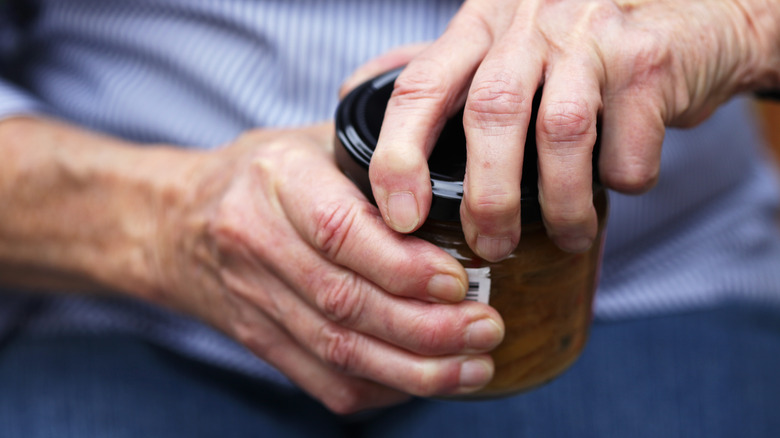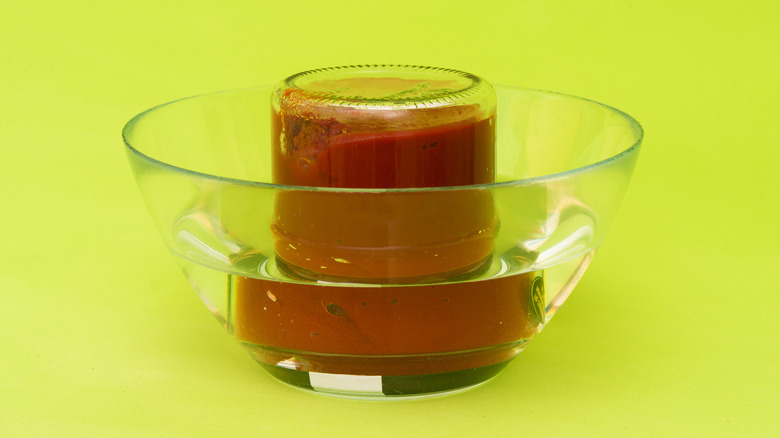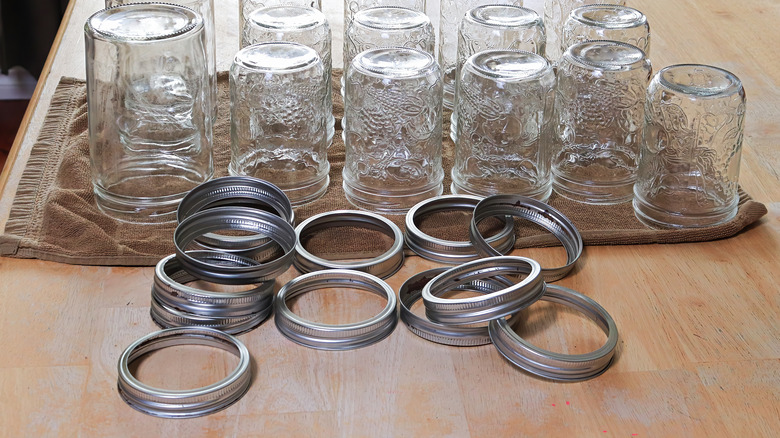The Hot Water Trick That Will Finally Open Stubborn Food Jars
There are few things that can make you feel as embarrassed and frustrated as trying and failing to open a stubborn food jar. That's why there are dozens of tricks in the book for opening jars of pasta sauce, pickles, jam, and other stubborn containers. Some suggest tapping the top of your jar with a knife, while others swear by breaking the seal with a thin knife blade, and you'd better have already tried using a dish towel to prevent your slippery hands from foiling you. You might even try Martha Stewart's hack for opening stubborn jars, which involves fitting a rubber band around the lid to get a better grip.
But when a particularly well-sealed jar causes these methods all to fail, you'll want to turn to old faithful: the hot water trick. All you need to do is submerge the lid of your jar in hot water, and watch the seal go "pop!"
Three ways to use hot water to open jars
To open a jar using hot water, turn on your faucet and wait for the water to get piping hot. Then, run the water along the space where the lid and jar meet. The heat from the water will cause the lid to expand, making it easier to screw off. If your faucet isn't getting hot enough, try boiling water in an electric kettle (this will also save water), and carefully pour the boiling water around the rim of the lid, making sure not to spill it and burn yourself.
Alternatively, you can boil water and plunge the top of the jar into the water for about 30 seconds. Just make sure to wear oven mitts to avoid a steam burn. Once the lid has been loosened by the heat, you can also give the bottom of the jar two firm whacks. (This is a separate technique called the "water hammer" method, but it works well in conjunction with the hot water.) You should hear a popping sound as the jar's seal releases, after which you can wrap a dish towel around the lid and screw it off.
Other jar-opening tips
The hot water technique works well for standard one-piece lids, as well as for two-part canning lids. However, when opening two-part lids, you should focus on the bottom part of the screw band, instead of trying to unscrew from the top, where the flat lid is held in place. The screw band itself is often easier to twist, as the two parts of the lid are not bound together.
Once opened for the first time, all jar lids should be easier to screw on and off from that point on. The seal that keeps them on tight is created during the canning process, during which the jars are heated and the lids are screwed on. As the lids cool, they also tighten, forming an airtight seal. Once this seal has been broken, you should be good to go, but for jars you know are persistently stubborn, use vegetable oil to prevent the lid from sticking in the future by greasing the inside for ease of opening.



